Hummingbirds are drawn to vibrant, nectar-rich flowers, and by planting the right perennials, you can create a garden that keeps them coming back year after year.
These long-lasting blooms provide a reliable food source while adding beauty and movement to your outdoor space. With the right selection of plants, you can enjoy the sight of hummingbirds flitting through your garden season after season. In this article, we explore 16 perennial flowers that will attract hummingbirds and keep them returning for more.
Bee Balm
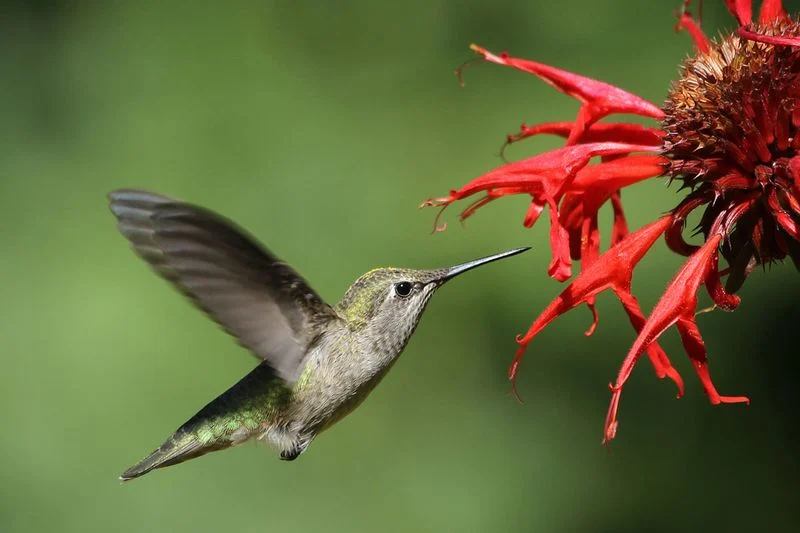
The vibrant colors of bee balm, ranging from pink to deep red, create a captivating display in any garden. Not only do these flowers offer striking visual appeal, but they also provide a rich nectar source for hummingbirds. Planting bee balm in clusters enhances their attractiveness, ensuring that your garden remains a hotspot for these tiny birds. Their aromatic foliage is an added bonus, offering a delightful scent that complements their beauty. With proper care, bee balm can thrive for years, becoming a garden staple.
Columbine
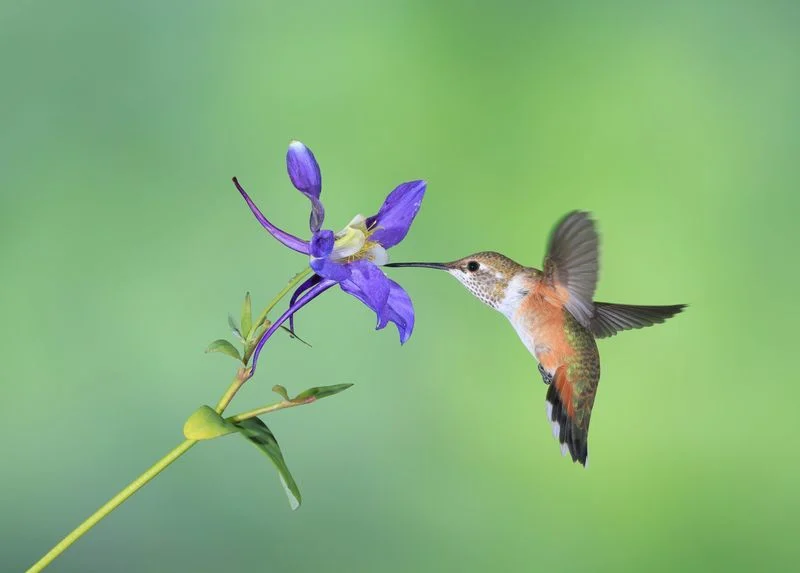
Columbine flowers bring a unique charm with their intricate, spurred petals and diverse color palette. Their delicate blooms sway gracefully in the breeze, capturing the attention of hummingbirds. These perennials are adaptable, growing well in both sun and partial shade, making them versatile additions to any garden. The long blooming season ensures a steady nectar supply for visiting hummingbirds. By deadheading spent flowers, you can encourage a second bloom, extending their appeal through the growing season.
Salvia

Salvia’s tall spikes and tubular flowers are a beacon for hummingbirds. The vibrant shades of purple, blue, and occasionally red, make them stand out in any garden setting. These hardy perennials are drought-tolerant, thriving even in challenging conditions. Their long blooming period ensures a continuous food source for hummingbirds. When planted in masses, salvia can create a stunning visual impact, drawing the eye and hummingbirds alike. Regular pruning encourages more blooms, enhancing their garden presence.
Foxglove
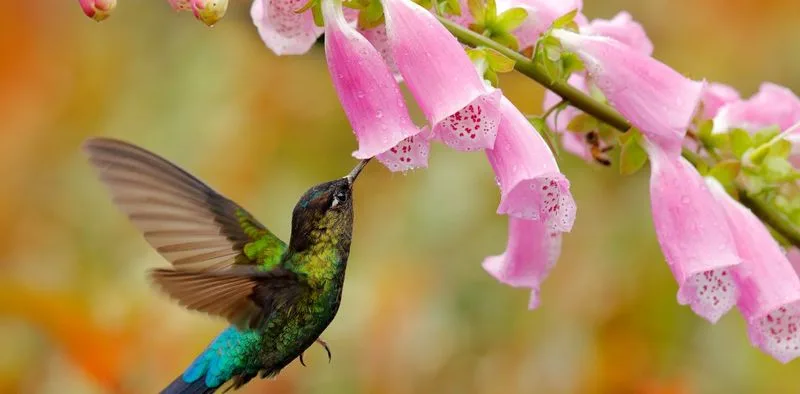
Foxgloves are known for their tall, stately flower spikes covered in tubular blossoms. Their pastel shades and unique structure make them irresistible to hummingbirds, who find their tubular blossoms perfect for feeding. Planting foxgloves in partial shade allows them to thrive, adding vertical interest to your garden. These biennial or short-lived perennials can self-seed, ensuring their presence for years to come. Careful placement ensures they become a focal point, attracting both hummingbirds and human admirers.
Daylily
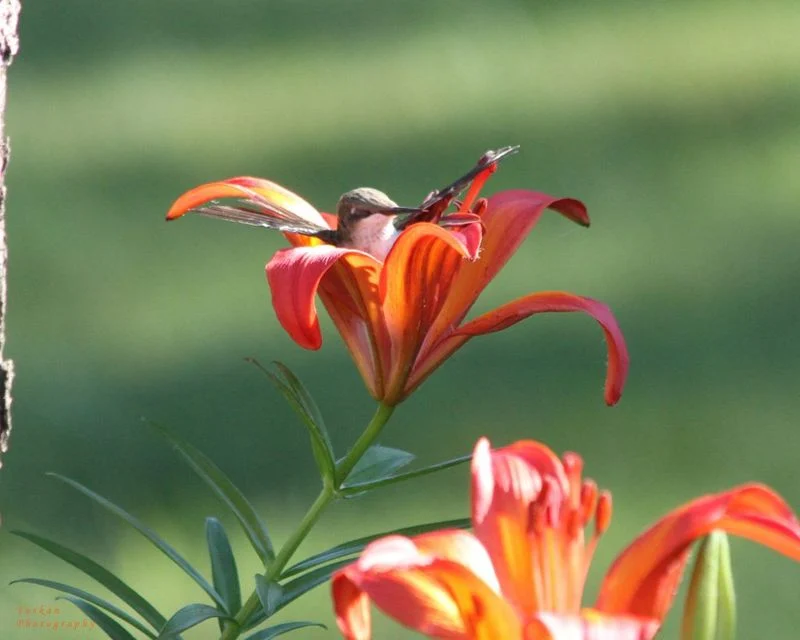
The hardy daylily is a garden favorite, known for its vibrant blooms and resilience. Each flower lasts only a day, but the plant produces a succession of blooms, providing continuous color and nectar. Hummingbirds are particularly drawn to the trumpet-shaped flowers, which offer easy access to nectar. Daylilies thrive in full sun and require minimal maintenance, making them a practical choice for any gardener. Their adaptability to different soil types and conditions further enhances their appeal.
Lantana
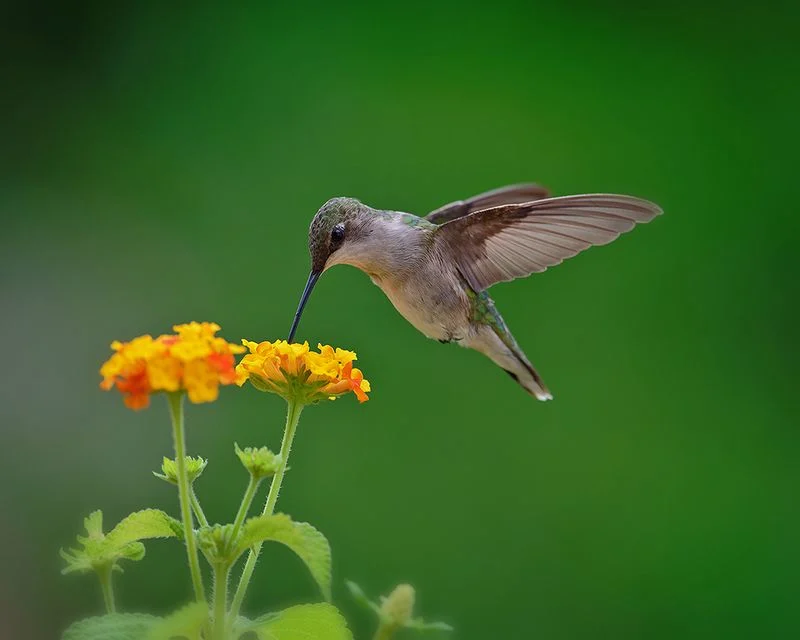
Lantana plants are celebrated for their colorful, clustered blooms that come in a variety of hues, from reds to yellows. These flowers are particularly attractive to hummingbirds, who frequent them for their rich nectar supply. Lantanas are drought-tolerant and thrive in sunny locations, making them ideal for hot climates. Their long blooming season provides a consistent food source for hummingbirds, ensuring they return throughout the growing months. Regular deadheading encourages new blooms and maintains their vibrant appearance.
Penstemon
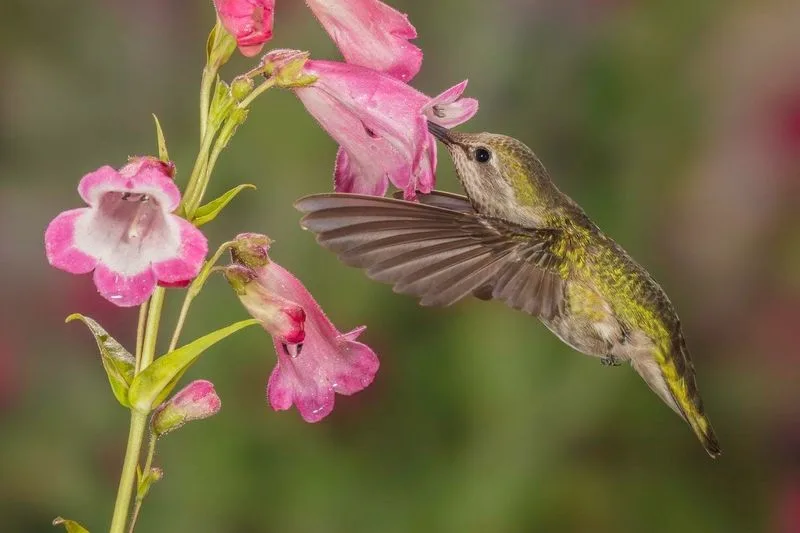
Penstemon flowers, with their tubular, bell-like shapes, are a natural draw for hummingbirds. The vibrant reds and pinks are particularly enticing, making these flowers a frequent stop for nectar-seeking birds. Known for their hardiness, penstemons thrive in well-drained soils and sunny locations. Their long blooming period adds value to any garden, ensuring a steady supply of nectar. Regular pruning after blooms fade encourages further flowering, helping maintain their allure for both gardeners and hummingbirds.
Coral Bells
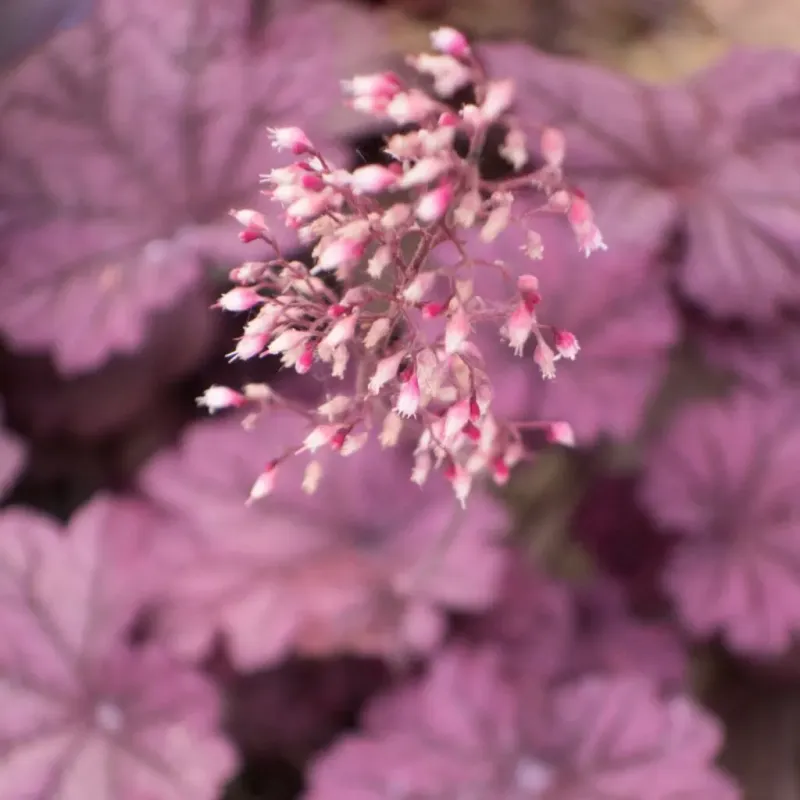
Coral bells offer a dual attraction with their colorful foliage and delicate, bell-shaped flowers. The leaves, ranging from deep purples to bright greens, provide year-round interest. Hummingbirds are drawn to the tiny blooms that rise above the leaves on slender stalks. Thriving in partial shade, coral bells are perfect for adding depth and texture to shaded garden areas. Their adaptability to different soil types makes them a versatile choice for many gardeners. Regular watering ensures their foliage remains vibrant.
Butterfly Bush
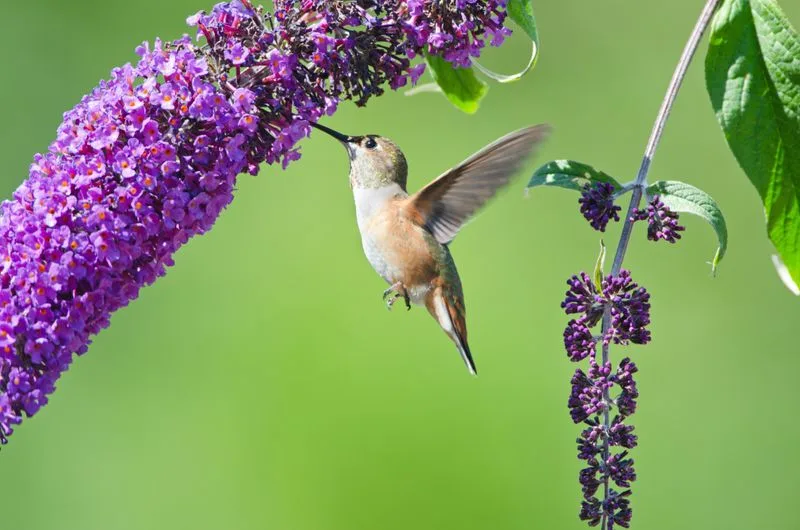
The butterfly bush is renowned for attracting a variety of pollinators, including hummingbirds. Its long, cone-shaped clusters of flowers are not only visually appealing but also rich in nectar. These hardy shrubs thrive in sunny locations and are relatively easy to care for. Pruning in early spring encourages new growth and abundant flowering. The butterfly bush’s vibrant blooms make it a standout in any landscape, providing a reliable food source for hummingbirds throughout the growing season.
Cardinal Flower

Cardinal flowers are striking, with their bright red blooms standing tall against green foliage. These flowers are specifically adapted to attract hummingbirds, offering a plentiful nectar supply. They thrive in moist, rich soils and are perfect for planting near water features. The cardinal flower’s vivid color and unique shape ensure they remain a focal point in any garden. Regular watering and mulching help maintain their health and prolong their blooming period, keeping hummingbirds returning for more.
Hosta
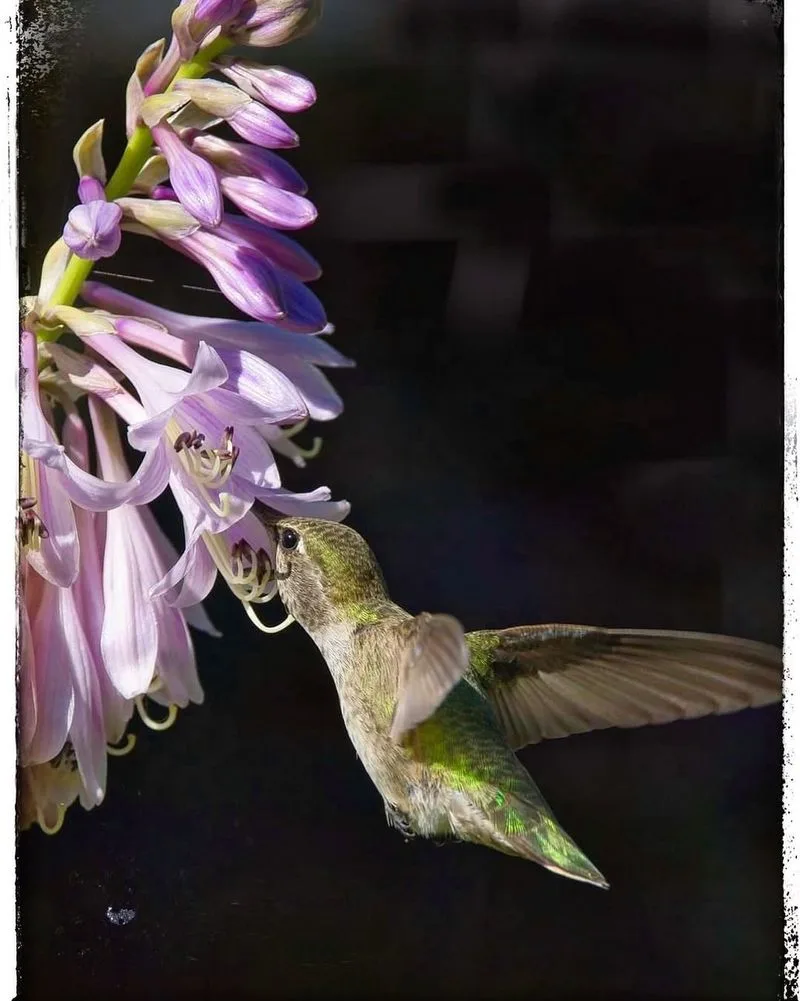
Hostas are primarily known for their lush foliage, but their tall flower spikes are also attractive to hummingbirds. These perennials thrive in shaded areas, offering a solution for gardeners with limited sun exposure. The large, vibrant leaves provide a beautiful backdrop for the delicate flowers that emerge in mid-summer. Hostas are low-maintenance, requiring minimal care once established. Their versatility and shade tolerance make them a popular choice for many gardens, adding texture and depth to any landscape.
Agastache
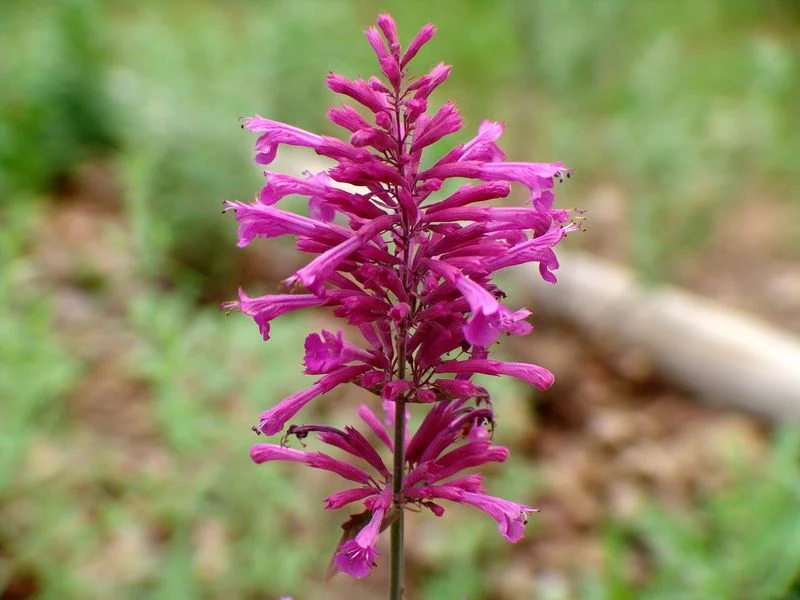
Agastache, also known as hummingbird mint, is a surefire way to attract these birds to your garden. The tall flower spikes burst with color, featuring shades of pink, purple, and orange. These flowers are not only a visual delight but also rich in nectar, perfect for hummingbirds. Agastache thrives in sunny, well-drained areas and requires minimal maintenance. Their long blooming season makes them a reliable nectar source, ensuring hummingbirds continue to visit throughout the warmer months.
Wild Bergamot
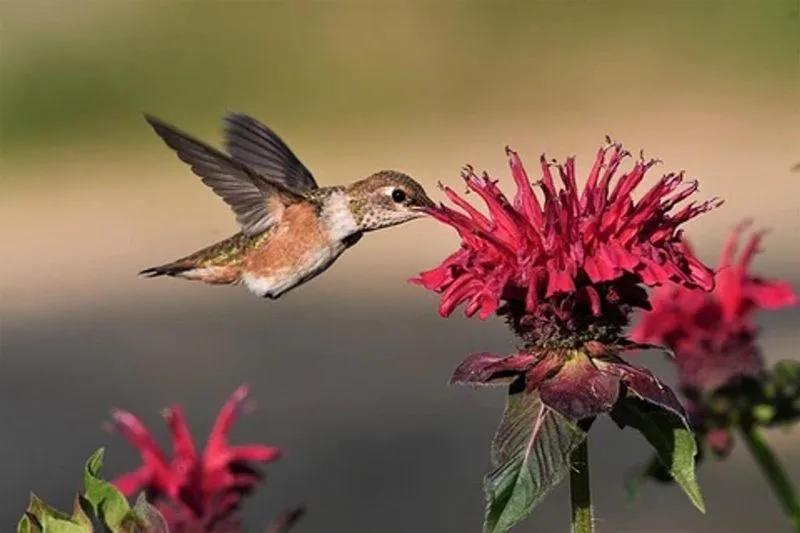
Wild bergamot, with its distinctive, fringed petals, is a garden favorite for attracting hummingbirds. The pink and lavender blooms add a touch of elegance and are a rich nectar source. Thriving in sunny, well-drained locations, wild bergamot requires minimal care once established. Regular deadheading promotes further blooming, ensuring these flowers remain a staple in your garden. Their aromatic leaves add another layer of interest, making them a delightful addition for both gardeners and hummingbirds.
Coneflower

Coneflowers offer a hardy and colorful option for attracting hummingbirds. Their daisy-like blooms come in shades of purple, pink, and white, standing sturdy on tall stems. These perennials thrive in sunny locations and are drought-tolerant, making them an excellent choice for low-maintenance gardens. The long blooming season provides an extended nectar source for hummingbirds. Deadheading spent flowers encourages new growth, keeping your garden vibrant and inviting. Coneflowers’ resilience and beauty ensure they remain a garden favorite.
Trumpet Vine
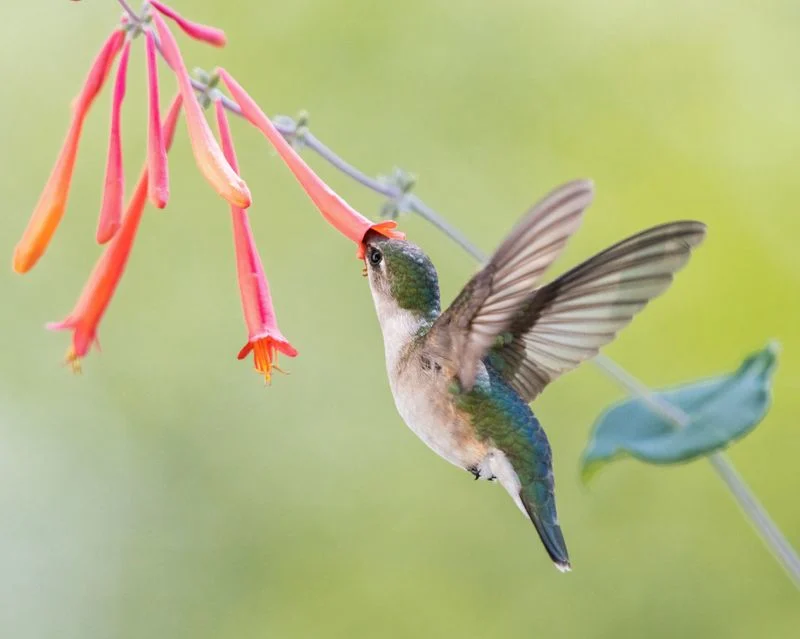
The trumpet vine is famous for its vigorous growth and striking orange flowers. These tubular blossoms are a natural magnet for hummingbirds, who find the nectar irresistible. Trumpet vines are ideal for covering fences or arbors, adding vertical interest to your garden. Once established, they require minimal care, thriving in sunny locations with well-drained soil. Regular pruning helps control their growth, ensuring they don’t overtake other plants. Their vibrant flowers and robust nature make them a standout choice.
Red Hot Poker

Red hot pokers, with their fiery red and yellow spikes, bring a touch of drama to any garden. These perennials are a hummingbird favorite, offering abundant nectar. They thrive in sunny, well-drained locations, standing out with their bold colors. The tall flower spikes create a dynamic contrast against green foliage, making them a focal point. Minimal maintenance is required, with deadheading promoting continued blooming. Their striking appearance and nectar-rich blooms ensure they remain a popular choice among gardeners.

